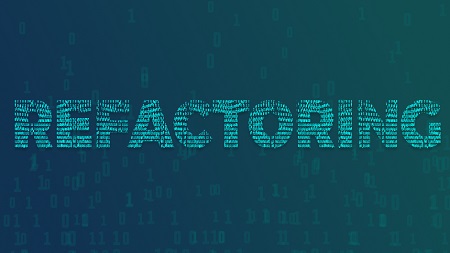
English | MP4 | AVC 1280×720 | AAC 44KHz 2ch | 2h 08m | 240 MB
Frustrated or slowed down by messy code? Don’t wait for someone else to clean it up – learn how to refactor and do it yourself! This course will walk you through what you need to know for refactoring.
Technical debt grows with the size of any software project. Without refactoring it will eventually fail, thus refactoring may be considered an essential skill of any professional software engineer. In this course, Java Refactoring: Best Practices, you will learn how to efficiently refactor and produce cleaner software. First, you will see what code smells are, and why they are bad for your codebase. Then, you will explore how to recognize and refactor them using a variety of techniques to achieve cleaner and more maintainable code. Finally, you will discover the most important principles that apply to refactoring and clean code. By the end of this course, you will have the necessary skills to convert a mess into flexible and robust software, one line at a time.
Table of Contents
Course Overview
1 Course Overview
Why Refactoring Matters
2 Introduction
3 The Art of Refactoring
4 Code Smells
5 Refactoring Process
6 Prerequisites
7 Overview of Course
Splitting Bloaters
8 Defining Bloaters
9 Introducing the Project
10 Long Parameter List
11 Long Method
12 Contrived Complexity
13 Primitive Obsession – Preserve Whole Object
14 Primitive Obsession – Introduce Object
15 Data Clumps
16 Combine Entities
17 Primitive Obsession – What We Didn’t Cover
18 Large Class
19 Summary
Fixing Object-oriented Abusers
20 Defining Object-oriented Abusers
21 New Project Requirements
22 Conditional Complexity
23 Refused Bequest
24 Temporary Field
25 Alternative Classes with Different Interfaces
26 Summary
Dealing with Change Preventers
27 Defining Change Preventers
28 Changes to the Project
29 Divergent Change
30 Solution Sprawl and Shotgun Surgery
31 Parallel Inheritance Hierarchies
32 Summary
Refactoring Couplers
33 Introduction
34 Feature Envy
35 Inappropriate Intimacy
36 Excessive Exposure
37 Message Chain
38 Middle Man
39 Summary
Removing Dispensables
40 Introduction
41 Comments
42 Dead Code
43 Duplicate Code
44 Speculative Generality
45 Lazy Class & Data Class
46 Summary
Refactoring Tips and Principles
47 Introduction
48 Refactoring Tips & Principles
49 Refactoring Tools
50 Further Material
51 Summary
Resolve the captcha to access the links!